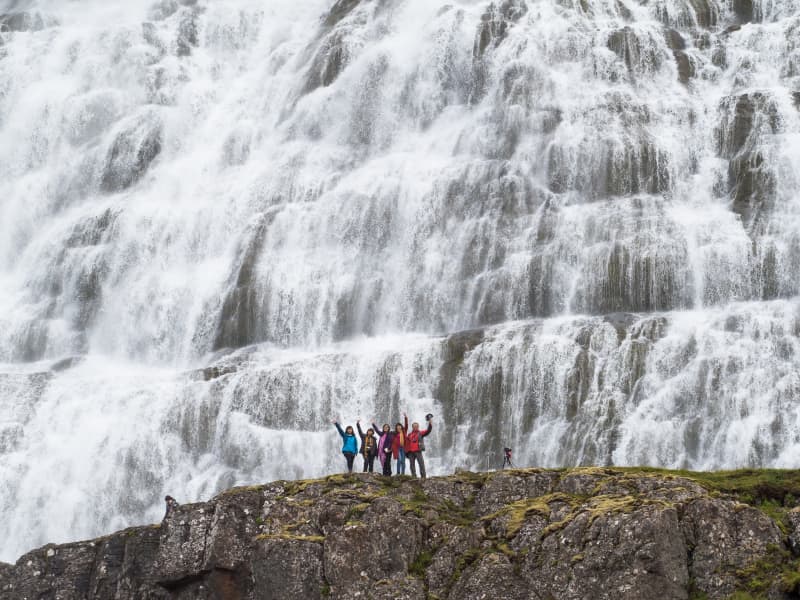
Dynjandi
Simply enthralling; The Westfjords’ favourite front-page model for decades, and is never short of breathtaking. The biggest and widest part of the waterfall is the one that gets all the attention and the photos, even though there are impressive, albeit smaller, waterfalls further down the river.To enjoy, follow this simple step-by-step manual. 1. Stop your car at the parking lot. 2. Walk all the way up to the biggest part of the waterfall, it takes about 15 minutes. 3. Take a deep breath and enjoy 4. Whenever ready, go back down to the car. 5. Tick off this article and continue working through the check-list.
View
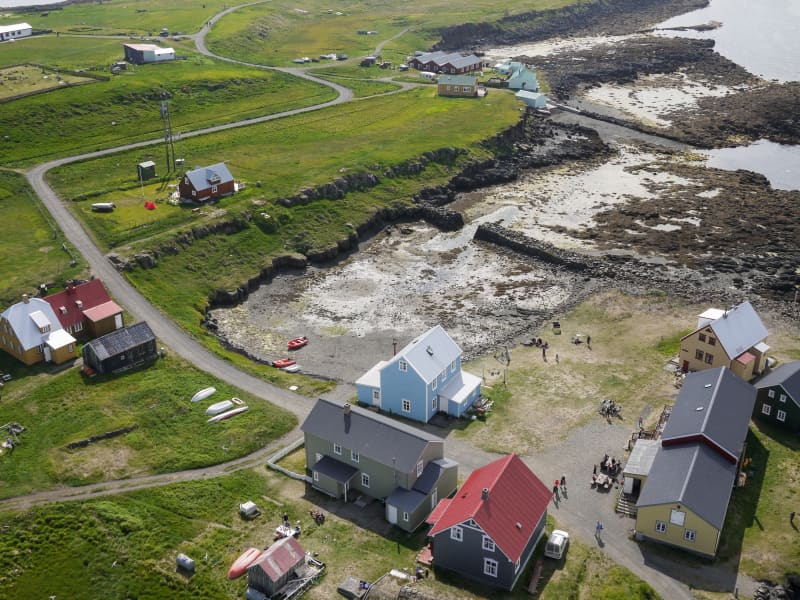
Flatey island
Breiðafjörður is the second biggest fjord in Iceland as it stretches 70 km where it is widest. Where the fjord gets more shallow there are almost uncountable number of islands but if we would have to guess a number, they would be around 2800. Many of those islands were inhabited few decades ago but now almost all are uninhabited. Flatey is the one exception. Flatey is the biggest of the islands in Breiðafjörður. It also is the only island in Breiðafjörður where inhabitants live the whole year round. The inhabitants count as many as 6 persons but during summertime the population multiplies. Many of the other islands in Breiðafjörður used to be inhabited not so long ago like Hvallátur, Svefneyjar and Akureyjar. All the islands have one thing in common. They are all made by the force of glaciers in the ice age. The islands are mostly flat and the geological layers are similar to the ones on the Westfjords. In most of the islands there are many plants and the birdlife is diverse with puffin, eider and black guillemot being the kings of the fjord along with the White-tailed-Eagle. The history tells us that the people that lived in Breiðafjörður never had to deal with shortage of food because of the plentyful gifts of nature such as birds, fish and shells. When there were bad conditions and food shortage was common in Iceland, people fled to Breiðafjörður bay where there was plenty of food for everyone.
View
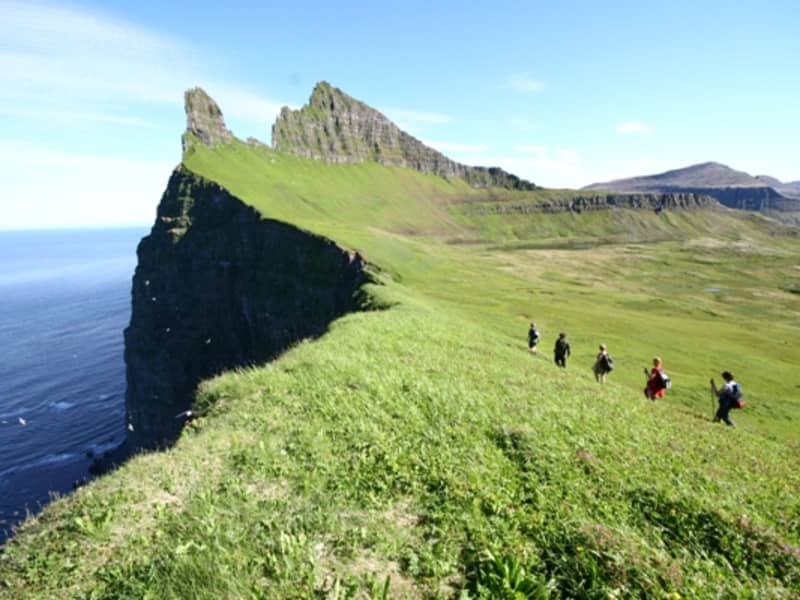
Hornstrandir
This territory of the Arctic fox has been uninhabited since the 1950s. As isolated as it was then, it attracts the casual half-day visitors and serious gore-tex hikers alike. Its main attractions are three. First, the bird cliffs surrounding the bay of Hornvík, are a magnet of gigantic proportions. On the eastern side of the bay the cliff reaches a height of more than 500 metres, and the birds are teeming. Second, as there are no infrastructure and the tourists few in relation to the sheer size of the area, the sense of remoteness is strong. You can hike days on end without seeing a single person. The nature is pure and the tranquillity unmatched. Third, as the area is a haven for the Arctic fox (think hunting-ban and bird-packed cliffs), the chances of spotting one are high.
Most tours, especially day tours, depart from Ísafjörður. Hikers wanting to go on their own can also take boats from Bolungarvík and Norðurfjörður.
For further information on the Hornstrandir Nature Reserve, please visit https://ust.is/english/visiting-iceland/protected-areas/westfjords/hornstrandir/ . The Hornstrandir Visitor Centre is located in downtown Ísafjörður.
View
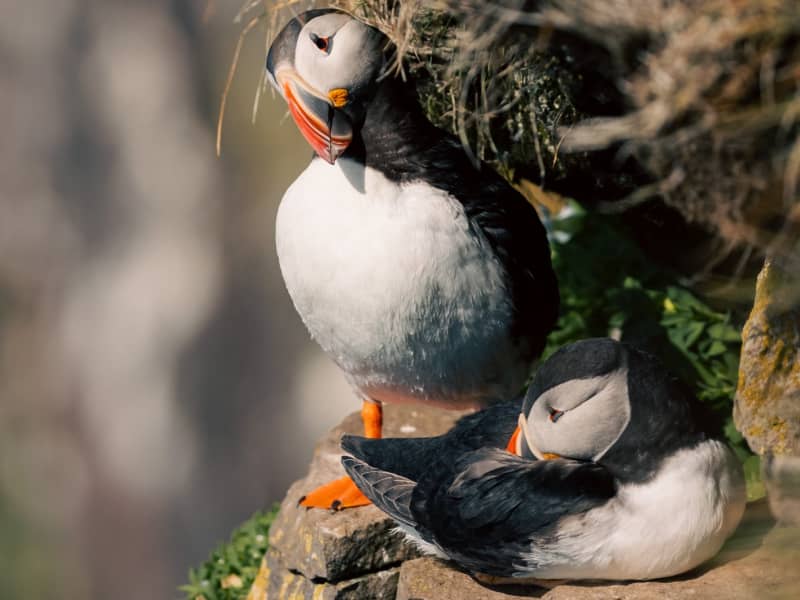
Látrabjarg
One of Europes biggest bird cliffs, a home to birds in unfathomable numbers. This westernmost point of Iceland is really a line of several cliffs, 14 kilometres long and up to 441 m high. And it’s as steep as it gets, dizzyingly so. Safe from foxes, the birds are fearless, and provide stunning photographic opportunities from close range. Bird photography for dummies, you might say. The puffins are particularly tame and are the ones frequenting the grassy, higher part of the cliffs. But look out, the edges are fragile and loose and the fall is high.Látrabjarg is thus deservedly the most visited tourist attraction in the Westfjords. The cliffs are easily accessible by car and when you’re there, a walk along the cliffs awaits. The whirling sensation will not fade, and neither will the memories.
View
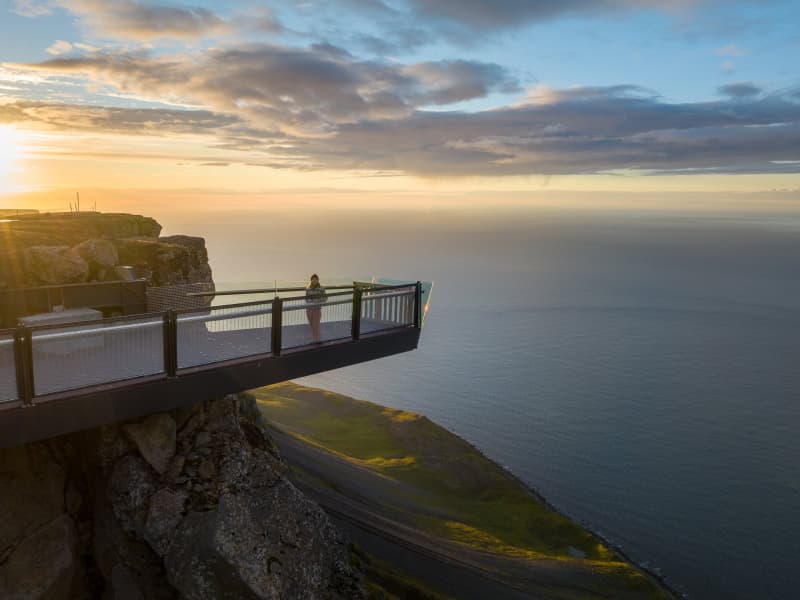
Outstanding Bolafjall
The most popular visiting point in Bolungarvík is the viewing platform on top of Bolafjall Mountain. The place offers a staggering view over Ísafjarðardjúp, Jökulfirðir and some people say all the way to Greenland. To get to Outstanding Bolafjall you have to drive up the road from Bolungarvík the way to the radar station on the top. The station was built by the Americans but is now controlled by the Icelandic coast guard. The route is open from the middle of june until august september. After a visit to Bolafjall, or even before, We recommend a coffee break and a nice walk at the black sand beach in Skálavík.
The road up to the mountain is open when situations in the mountain allow it to be. Usually that is from middle of June until the middle of September.
View
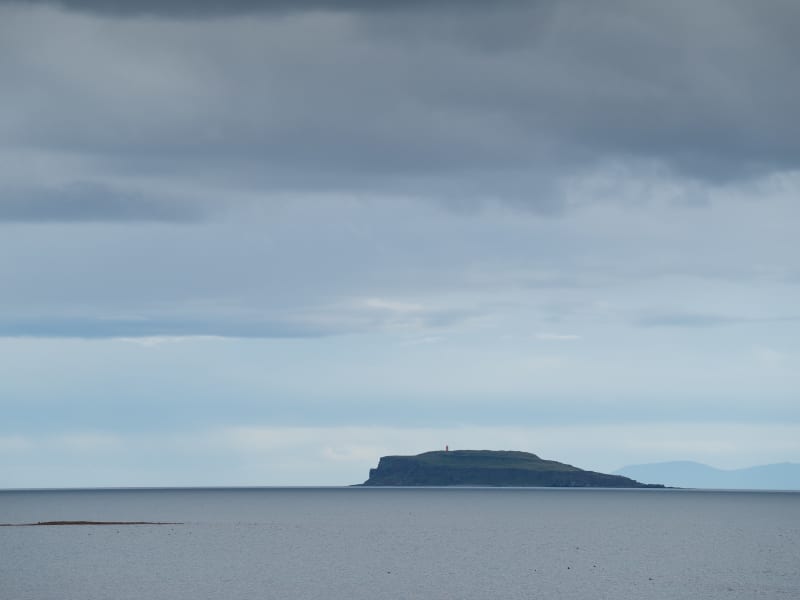
Grímsey
Situated just off shore from Drangsnes in Steingrímsfjörður, the island of Grímsey is a true gem of nature. From Drangsnes there are scheduled boat trips to the island, which take around 10 minutes. In Grímsey there is abundant birdlife and beautiful nature. We recommend at least 2 hours stay on the island to explore the island and it's birds. For more information about the boat trips, contact Malarhorn cafe.
View
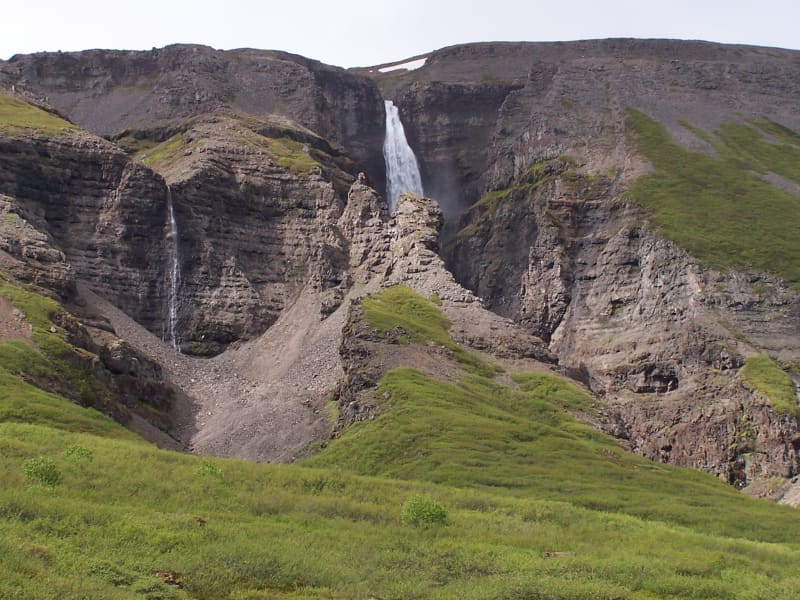
Valagil
Valagil is a spectacular ravine, complete with mighty waterfall and made from layers upon layers of ancient lava. You will find Valagil at the landward end of Álftafjörður, not too far from Súðavík. There is a marked footpath to the ravine from the road. Some say the ravine is named after the falcons (valur is Icelandic for falcon) which reported used to nest there. Other people say it is named after a woman called Vala who is said to have fallen to her death in the gully (hundreds of years ago).
View
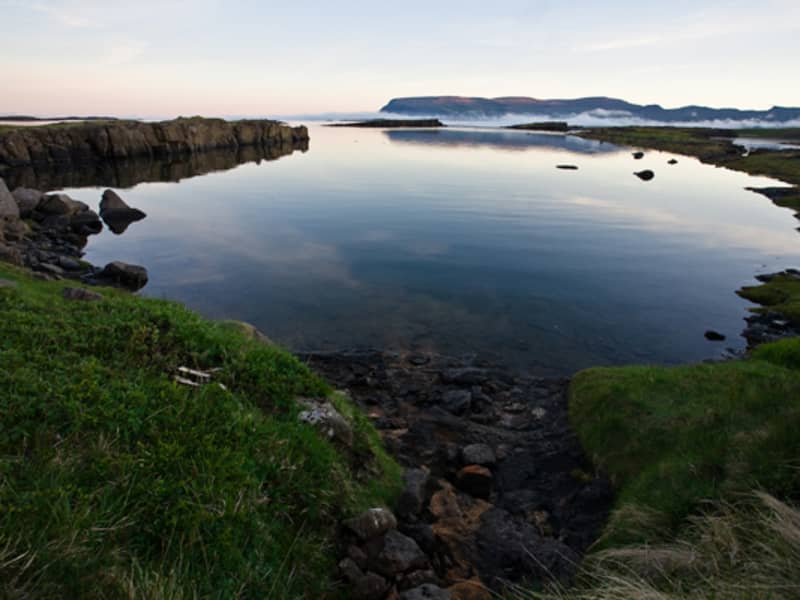
Vatnsfjordur
Vatnsfjörður nature reserve is an area of total 20.000 ha. 80% of the area is rocky and barren but the lowlands is mostly covered with birchwood. From Vatnsfjörður it's perfect to visit most of the Westfjords. It takes you about one and a half hour to drive either to Látrabjarg, to Selárdalur or even to Ísafjörður. It takes you half an hour to drive to Dynjandi and it's a one hour sail from Brjánslækur to Flatey island.
View
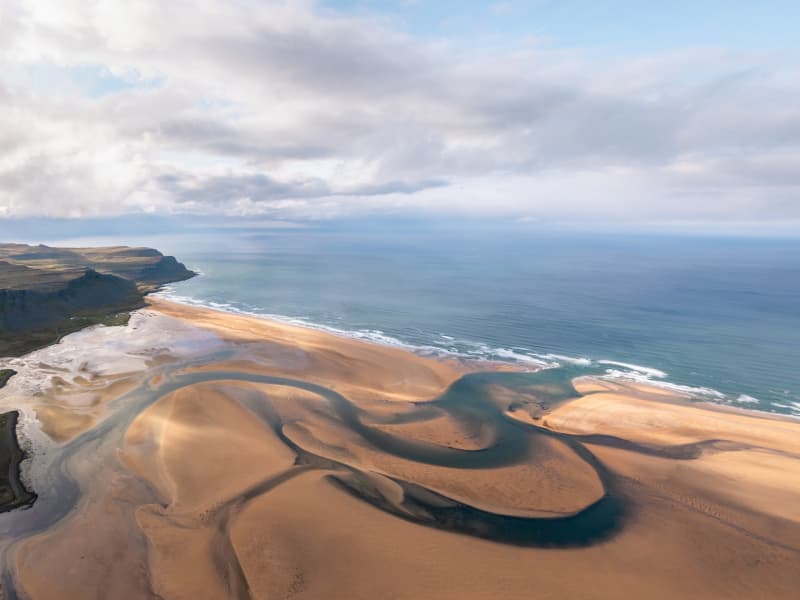
Rauðasandur
Rauðasandur (Red Sand) is precisely that: a beach with endless red sand. Well, not endless but 10 km is a lot. The magnificent hues of the sand differ with daylight and weather, and the beach is the biggest pearl in a string of coves with sand ranging in colours from white through yellow through red to black, and in coarseness from very fine to sole-hurting chips of seashells. Just pure sand enlivened by countless seabirds and seals, an oasis with unique tranquility. Forget everything, except maybe getting the perfect shot of the ever-changing hues of yellow, orange and red.
Here's just pure sand and unique tranquillity. You might want to step out of the car, get the camera out and start walking on the seemingly endless beach.
If no, why not enjoy a cup of coffee in the French café and look at the spectacular view were Snæfellsjökull glacier in Sæfellsnes peninsula imperiousl rivets your attention in the background.
View
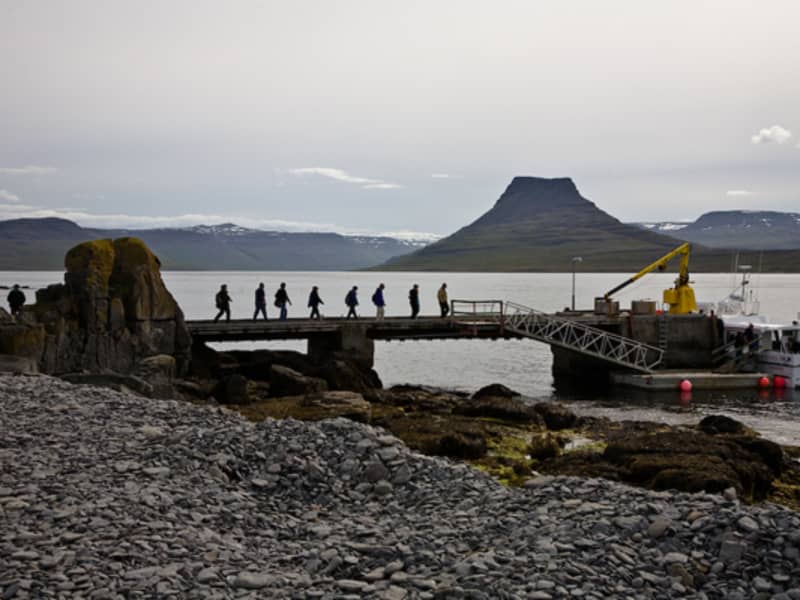
Vigur
Vigur is one of three islands in Ísafjarðardjúp. The island is long an narrow and gets its name from the shape, Vigur means spear. The island's unique wildlife has been a popular tourist attraction.
Puffins, eiders, guillemoths and arctic terns are this island’s magnets, and they are all abundant. Indeed, as the puffins, which nest in burrows, have dug through much of the island’s soil, travellers have to follow a certain path to avoid falling into one. This small bird, by some dubbed the penguin of the north, is a clumsy flier but impresses visitors by artfully stacking its beak full of sand eel or small fish, carrying it home to its hungry chicks. Being the opposite of the hospitable humans that live on the island, the Arctic terns fight to keep intruders away. Luckily, a stick held above the head does the trick. Eiders and humans share a mutual beneficence; eiders get protecion by nesting in close vicinity of the people, who collect the precious down from the eider nests.
In Vigur you find the smallest post office in Iceland, as well as the only windmill and beautifully renewed houses.
To get to Vigur, there is a daily boat tour from Ísafjörður.
View
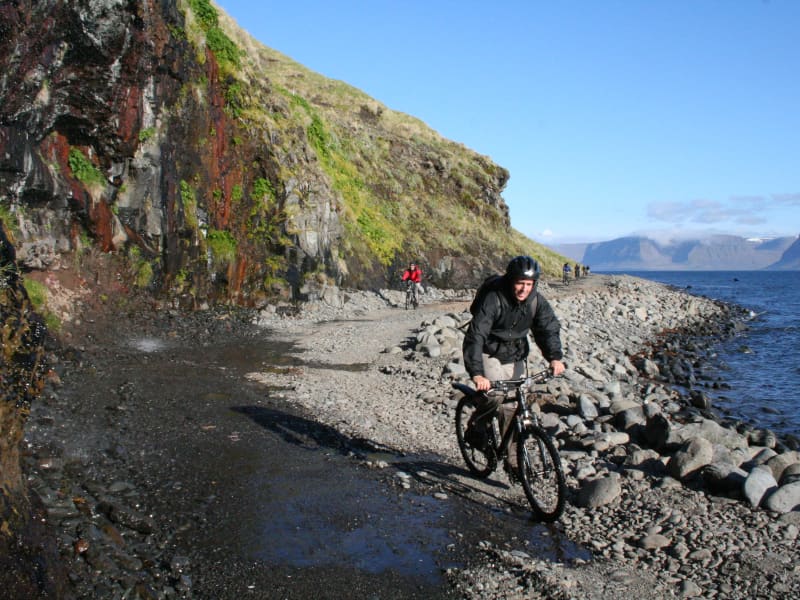
Svalvogar
Svalvogar is a 49-kilometre circular route between the fjords of Dýrafjörður and Arnarfjörður. It usually starts and finishes in Þingeyri and takes the narrow exposed coastal track around the headland (not to be attempted at high tide) and comes back along the Kaldbakur route, past the Westfjords’ tallest mountain in the so-called Westfjords Alps. Sometimes called the Dream Road, Svalvogar is among the most beautiful routes in the country. It is not suitable for small cars and is best enjoyed by mountain bike. Be prepared to get out of breath…or take a 4x4.
If passangers are afraid of heights it is advised to start the route from Arnarfjörður and drive it over to Dýrafjörður, then in case of passing another car yours will be on the right side of the road, not quite as intimidating as driving along side the sea.
View
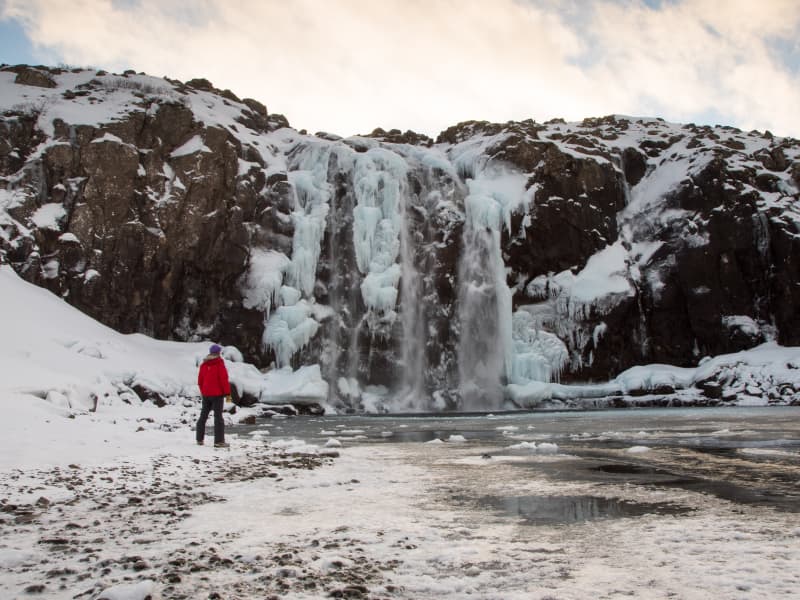
Foss í Fossfirði
Fossfjörður is one of the the offshoot fjords of Arnarfjörður, it is the westernmost of the so called "Suðurfirðir" the Southern Fjords. These are Bíldudalsvogur, Fossfjörður, Reykjarfjörður, Trostansfjörður and Geirþjófsfjörður. In Fossfjörður is a farm called Foss and also a waterfall carrying the same name, wich actually means waterfall. So in waterfall fjord you will wind a farm called waterfall aswell as a waterfall called waterfall. Confusing ? Maybe a little. In Fossfjörður you will also stumble up on the so called A-house, wich has been a popular pitstop among travellers and photographers. This abandoned house is unique for its shape and location.
View
